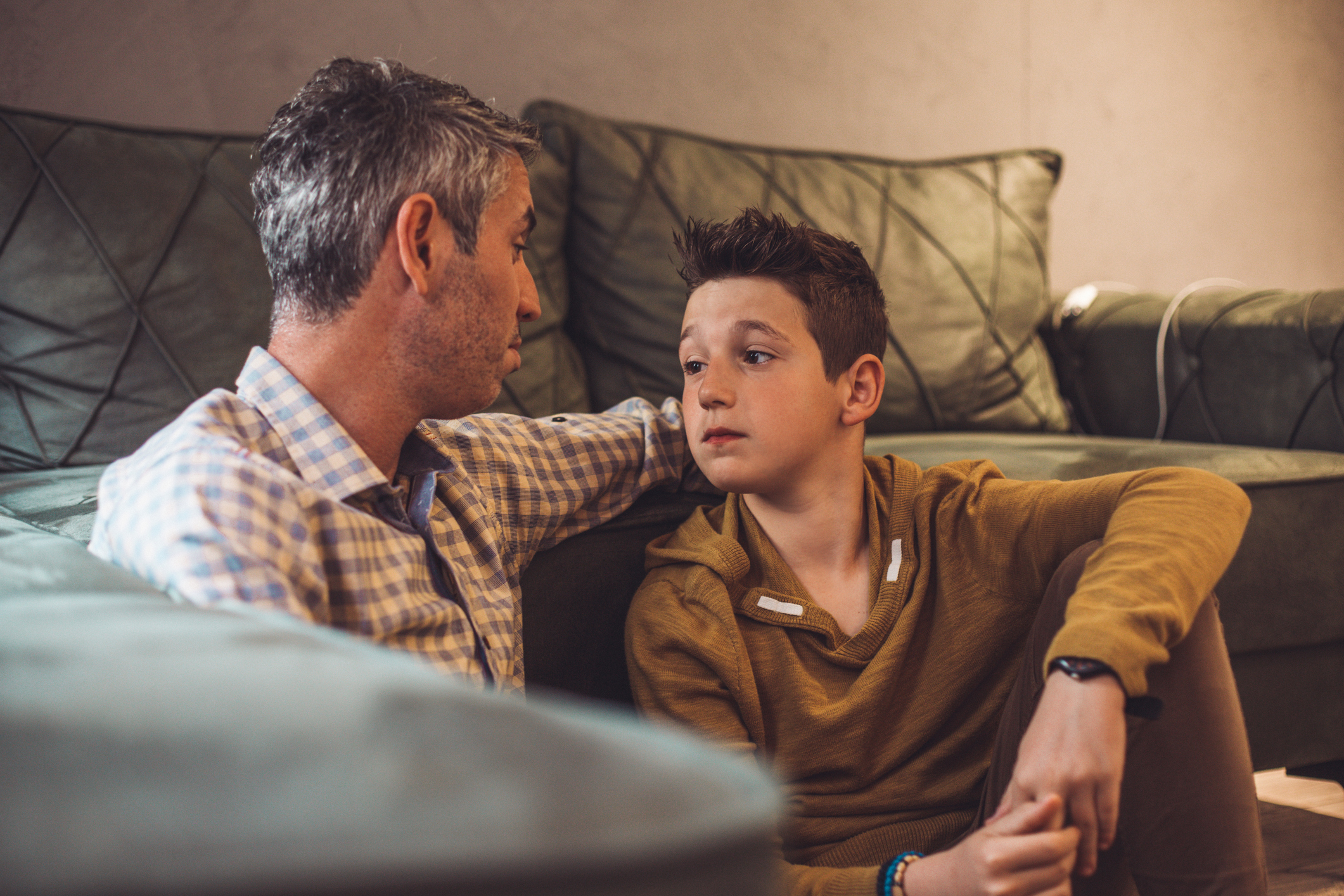
Table of Contents
Identifying Child Behavior Problems and Solutions, According to Therapists

Written By: Sarah Fielding

Clinically Reviewed By: Cecilia Masikini
September 4, 2025
6 min.
Here are expert-approved tips for identifying child behavioral problems and solutions.
Learn more about our Clinical Review Process
Table of Contents
Even the most mild-mannered child will have moments of outbursts, defiance, or withdrawal. While these moments can be frustrating, they can also provide parents or guardians a chance to support their child — and get to the bottom of what’s really going on. “Behavioral problems are rarely just ‘bad behavior,’” says Charlie Health Group Facilitator Bree Williams, LPCA. “They’re often signs that some of a child’s needs aren’t being fully met.”
Charlie Health Licensed Creative Arts Therapist Courtney Way, MA, LCAT, adds that it’s important to treat child behavior as a form of communication/ “Children may not have the words to express their emotions, so their actions reveal what they are experiencing internally,” she said. Read on to learn more about the range of behavioral challenges children may face, the different ways these behaviors can show up, what might be driving them, and how parents can step in with effective support.

Behavior problems can signal that your child needs support
Our virtual treatment programs connect children ages 8+ and families with compassionate care from the comfort of home.
Common child behavior problems
Each child is unique, but certain behavioral problems can be widespread as they grow. These can be “temporary and tied to normal developmental stages,” says Way. According to Williams, Way, and Charlie Health Contemplative Practitioner Tairesha “Sunflower” Flemister, LMSW, here are some common behavioral problems children might exhibit.
1. Defiance
A child might engage in defiant or oppositional behavior, such as breaking rules, talking back to adults, or ignoring instructions.
2. Arguing
Sometimes, a child might challenge adults verbally, questioning their instructions or rationale. A child could become argumentative about specific things or in response to most prompts from an adult — or even other kids.
3. Aggression
A child might show aggressive tendencies. These can be physical, such as hitting and throwing things, or verbal, including acts of bullying and yelling. Children might direct their aggression toward adults and fellow children.
4. Inability to focus
Whether at school, home, or in a community setting, some children might have difficulty focusing on what they’re doing. This behavior problem might present as trouble sitting still or finishing a project. They might also exhibit impulsivity, like switching tasks without a reason or interrupting other people.
5. Emotional outbursts
Sometimes a large display of emotion is warranted, but it can also occur as a result of something seemingly minor. In the latter case, a child might throw a tantrum or cry in a way that is disproportionate to the situation.
6. Excessive clinginess
This expression could stem from an anxious attachment or be one example of anxiety-related behaviors, like continual worry or sickness.
7. Struggle with routines
Some children might find it challenging to stick with routines. These could include getting ready in the morning, homework, eating, or bedtime.
8. Withdrawal
A child might become withdrawn from their peers or family members. They might isolate themselves, avoid social situations, or demonstrate little to no interest in previously enjoyed activities.
What mental health conditions can cause behavioral problems?
Children are all prone to instances of behavioral problems. But, as Williams puts it, “While occasional misbehavior is normal, persistent or intense challenges can sometimes be connected to underlying mental health concerns.”
There is a range of behavioral and mental health conditions that a child might be living with, from attention-deficit/hyperactivity disorder (ADHD) to depressive disorders. Below is a series of mental health disorders that may be linked to child behavior problems. However, a certified medical professional can provide insight into whether a child is experiencing one.
Here are the symptoms of related mental health disorders as detailed by our experts.
1. ADHD
A child living with ADHD might exhibit symptoms such as inattention, impulsivity, and hyperactivity.
2. Anxiety disorders
A range of anxiety disorders, such as panic disorder or social anxiety disorder, can contribute to what appears to be child behavioral problems. For instance, a person living with an anxiety disorder might withdraw, be clingy, appear irritable, or refuse to go to certain places.
3. Autism spectrum disorder
A child living with autism spectrum disorder (ASD) might appear rigid or even defiant, seemingly unable to adjust to new routines. They might also find specific sensory and social experiences challenging or uncomfortable.
4. Depressive disorders
A depressive disorder can tremendously impact a child’s behavior. In these cases, a child might appear irritable, withdrawn, isolate themselves, or avoid once-loved activities.
5. Oppositional defiant disorder
A child exhibiting anger, irritability, defiance, or vindictiveness, especially towards authority figures, could be living with oppositional defiant disorder.
6. Traumatic experiences
While not necessarily a mental health disorder, kids might exhibit behavioral problems if they have trauma. Stressful or adverse childhood experiences could lead to aggressive tendencies, hypervigilance, or difficulty regulating their emotions.
Child behavior solutions for parents
Whether it’s due to a mental health condition or not, children exhibiting adverse behavior need support and care. Parents can provide incredible help to their children, providing everything from a safe, nonjudgmental space to sharing potential coping skills. “Adults can support children by responding with patience, consistency, and clear expectations,” says Way.
Here are strategies our experts recommend parents use to support their children with behavioral problems.
1. Positive reinforcement
It’s all too easy to focus on negative actions and ignore good behavior. Take the time to acknowledge and praise when your child behaves, providing positive reinforcement for these actions.
2. Active listening
Don’t assume you know what they’re feeling or what’s motivating their actions. Listen actively to your child and repeat back what they say to help them feel understood. Give them a judgment-free space to talk.

3. Stay calm
As you listen to your child and help them work through their feelings, a calm demeanor can make a tremendous difference. Staying calm during stressful situations also provides an example of how to maintain self-control and exhibit positive behavior.
4. Set boundaries
Lay out clear boundaries with known, fair, and consistent consequences for breaking them. Make sure they know what to expect both in the boundary and any repercussions, so there’s a reassuring predictability.
5. Consistent routines
As Williams says, “Predictability helps children feel safe and secure, reducing anxiety-driven behaviors.” Give them structure, including set bedtimes and mealtimes.
6. Collaborative problem-solving
Whether it’s setting a routine or coping with their feelings, don’t assume you know exactly what’s best for them. Within reason, work with your child to come up with solutions — a process that can also help them build emotional awareness.
7. Discussing coping skills
You can discuss different coping techniques with your child, such as journaling, breathing practices, meditation, and movement.. “Providing outlets like physical activity, creative play, or journaling allows children to express their emotions in healthy ways,” says Way.
It can also help to mirror a coping mechanism or offer to do them together. This dynamic can help normalize the behavior in their mind.
8. Collaborate
Being a parent offers valuable insight into what’s causing disruptive behavior, but school-age children also spend a lot of time with teachers and guidance counselors. Leaning on these other resources, as well as options like behavioral therapy, can assist in supporting your child in overcoming bad behavior.
“Early support and collaboration between home, school, and healthcare providers can make a meaningful difference in helping children thrive,” says Way.

How Charlie Health can help
If a young person in your life is struggling with their behavior and well-being, Charlie Health is here to help. Charlie Health’s virtual Intensive Outpatient Program (IOP) provides more than once-weekly mental health treatment for people dealing with serious mental health conditions, including support for children ages 8+. Our expert clinicians incorporate evidence-based therapies into individual counseling, family therapy, and group sessions. With treatment, managing your child’s mental health is possible. Fill out the form below or give us a call to start healing today.




